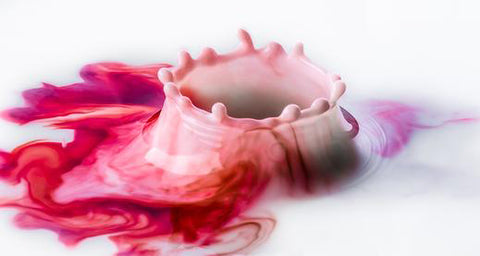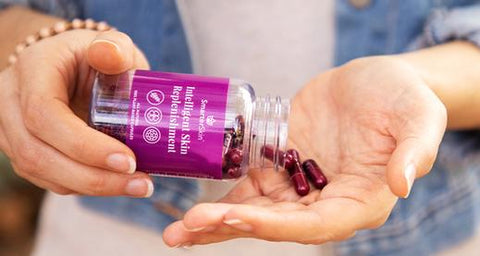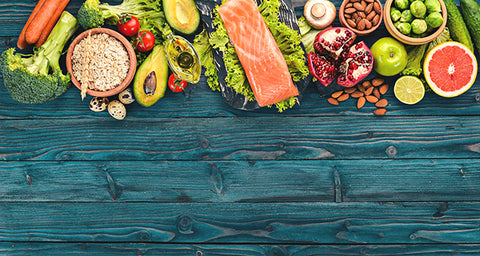
Bright, chewy candy, certain fruit juices, processed cheese, some breakfast cereals.
They all have one thing in common – the use of artificial food colorings to entice us in and make us eat them. As you can see from our (nowhere near exhaustive) list, it’s not just candy and sugary drinks that have been given a color touch up.
Even some seemingly ‘natural’ foods such as meat and fish products are given a little helping hand to make them look more palatable. Meats such as bacon and sausages are often dyed to make them appear more ‘meat-like’ and that beautifully pink, fresh salmon fillet? It’s quite possible that it’s been given a boost with a pinky red dye to make you want it more. After all, we eat with our eyes, as well as our mouths.
Whilst these fake food colorings are deemed safe for use in the food industry by the FDA, there are some concerns that their safety isn’t as much of an assurance as we might think.
Why Should I Avoid Food Colorings?
Aside from no one really wanting to exist on a diet full of lab-made chemicals, there have been various links found between artificial food colorings and certain health conditions.
There have been many studies that have found “small but significant” links between food dyes and hyperactivity disorders including ADHD in children. A large study in 2004 collated the results of 15 previous studies concluded that artificial food colorings do have the potential to increase hyperactivity in children.
Since kid’s food is so often artificially colored with food dyes, should they be so commonly used?
Another alarming risk of regularly consuming these dyes, as both young people and adults, is their link to cancer. This link is still being investigated, but it’s thought that the red food dye erythrosine has the most potential for harm. There is also concern that some food colorings also contain contaminants that could potentially have cancer-causing properties. Studies continue which could see bans on certain food dyes.
Furthermore, some food colorings are now known to increase the risk of allergic symptoms in those with allergies. Red and yellow dyes are thought to have the bigger potential for causing allergic symptoms including hives and asthma. One study found that in those with chronic hives, more than half of those tested experienced an allergic reaction to food dyes.
How Do I Know If a Food Contains Artificial Food Colorings?
Knowing how to spot a food coloring in an ingredient list is easier when you become food label savvy. The most common food colorings used in the US to look out for are:
Red No.40, also called Allura Red – a dark red color, used in candy, sports drinks and red sauces.
Yellow No.5, or Tartrazine – used in candy, sodas, juices, chips and cereal to give them a light, lemon-yellow color.
Yellow No.6, or Sunset Yellow – used to give candy, sauces, cakes and preserved fruit a deep yellow-orange hue.
Other food colorings you might spot in ingredient lists are:
Red No.3, also called Erythrosine – used to color candy and cake toppings a deep, cherry-red.
Blue No.1, or Brilliant Blue- commonly used in cake toppings, ice cream and canned peas to add a greeny-blue color.
Blue No.2, or Indigo Carmine – many deep blue candies, ice creams and kid’s cereals have been colored with this dye.
How to solve the problem?
Keeping an eye out for these ingredients is one way to cut back on food coloring, but there are also some natural substitutions for your own cooking! Dragon Fruit is a great natural alternative to pink or purple food coloring or Butterfly Pea for blue!






